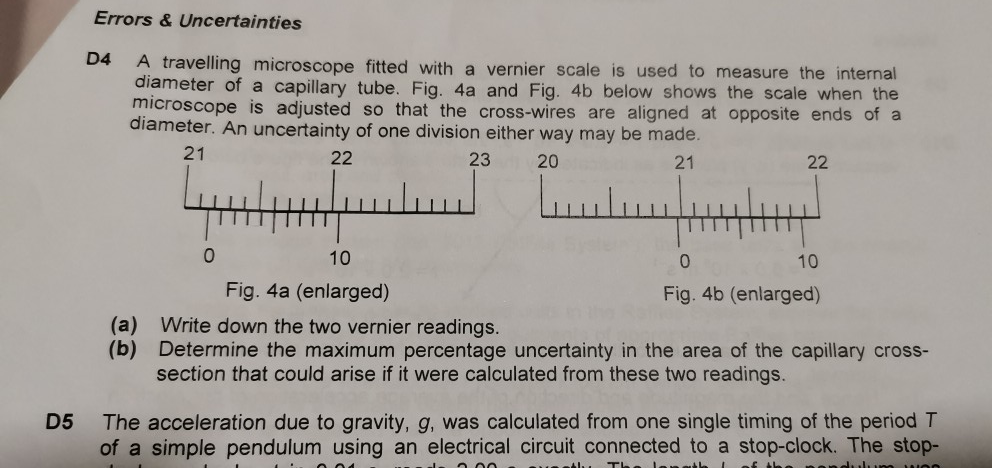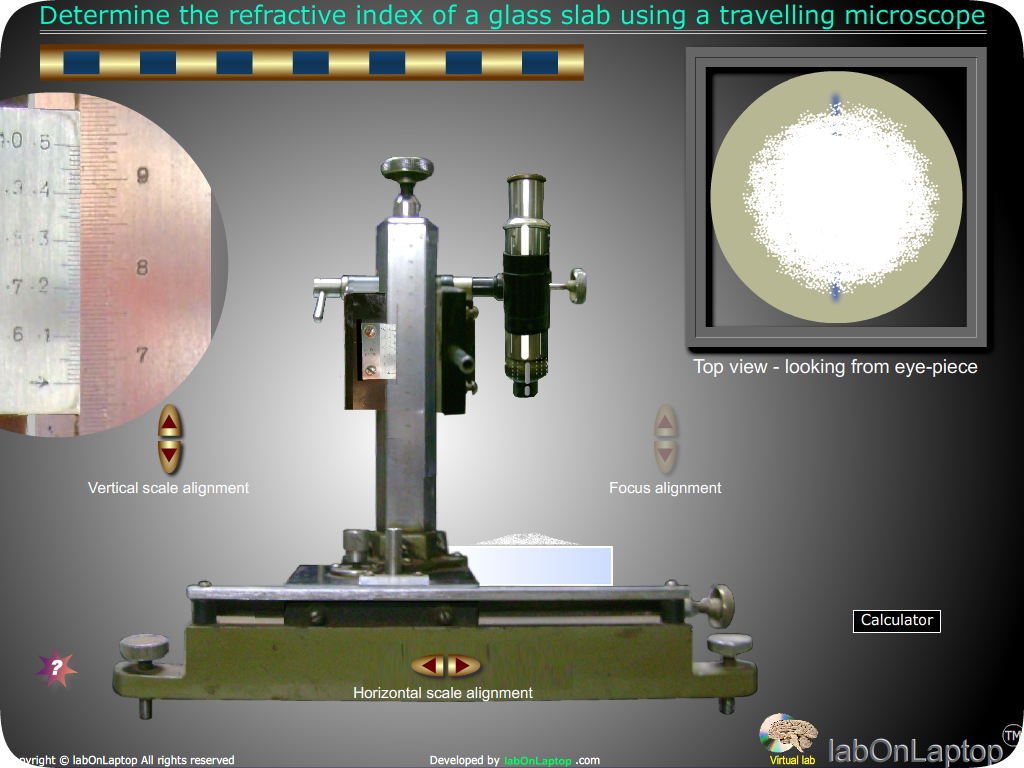How To Take Measurements Using Travelling Microscope

Prior to making any measurements you will want to calibrate your microscope with a stage micrometer.
How to take measurements using travelling microscope. When looking through the microscope the reticle image is imposed upon your specimen image. So one main scale division will be 0 5 mm. In a typical travelling microscope the main scale divisions are of magnitude 0 05 cm 0 5 mm each and the vernier scale contains 50 divisions. So the least count of the device will come to 0 5 50 1 100 0 01 mm or 0 001 cm.
A travelling microscope is used to determine small distance to an accuracy of 0 001 cm. For full information about travelling microscope watch this video. The least count of travelling microscope is 0 001 cm. Hence the least count of the travelling microscope will be 0 001 cm.
Use the specimen sheets included with your model if available. Slide the microscope along the internal guiderail to make a rough adjustment of the device. There will be 50 numbers of divisions on the vernier scale. Classically a traveling microscope uses a vernier scale a very precise type of scale utilized for scientific measurements because of its extreme accuracy and ability to measure very small increments.
Set the item you want to inspect onto the stage on the base of the microscope. An eyepiece reticle is a small piece of glass with a ruler or grid imposed on it that fits into the microscope eyepiece. With the object fixed in place the head can be manipulated to take measurements of the object being studied. Usually in travelling microscope each mm will be partitioned equally into two halves.
Main scale reading best coinciding division of vernier scale with main scale division least count. The measurement principle is based on the principle of vernier.















